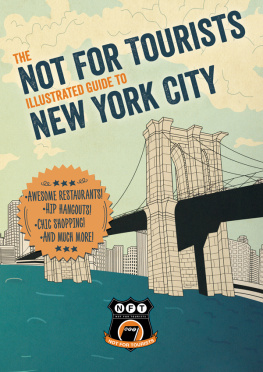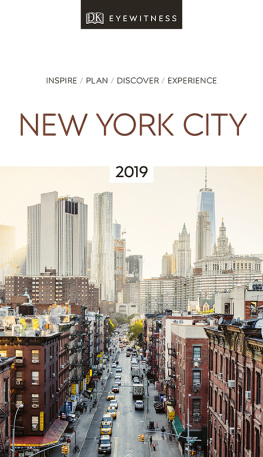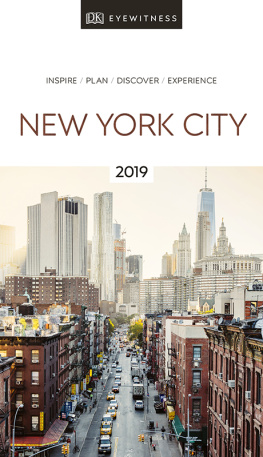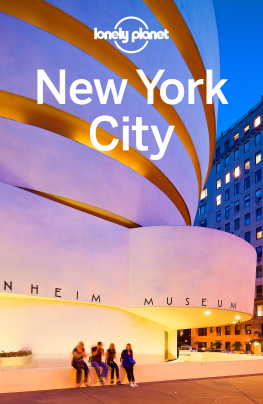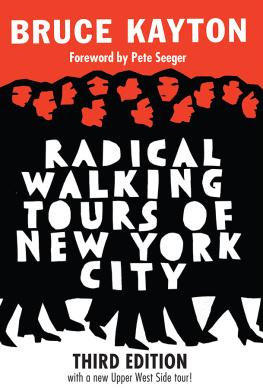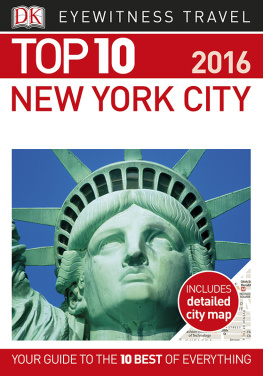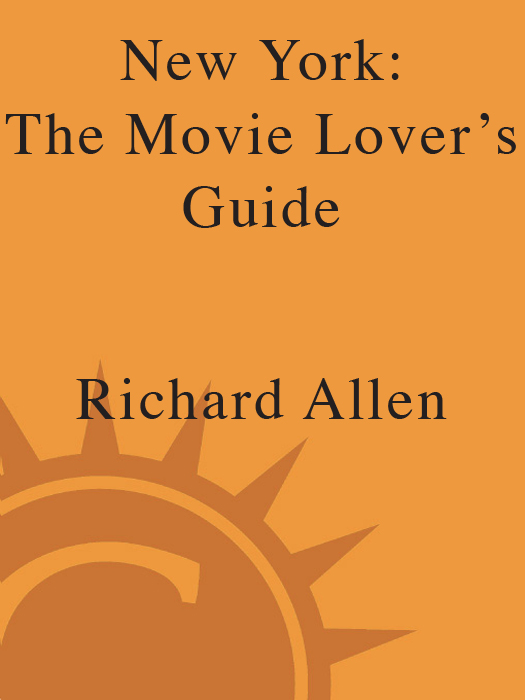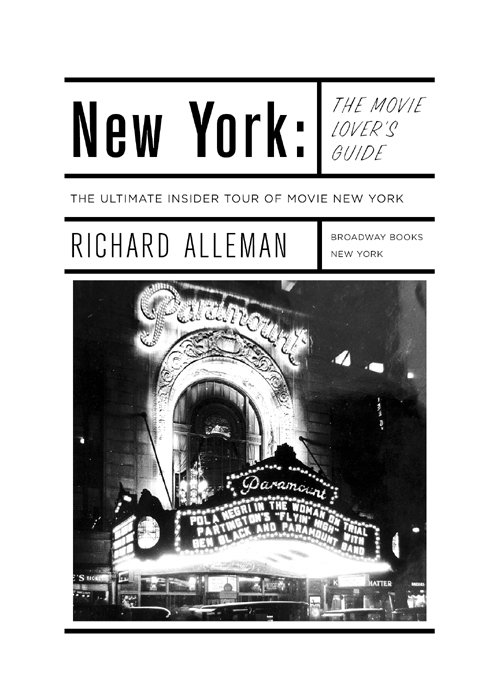
Copyright 1988, 2005 by Richard Alleman
All rights reserved.
Published in the United States by Broadway Paperbacks, an imprint of the Crown Publishing Group, a division of Random House, Inc., New York.
www.crownpublishing.com
Broadway Paperbacks and its logo, a letter B bisected on the diagonal, are trademarks of Random House, Inc.
Originally published in slightly different form in the United States as The Movie Lovers Guide to New York by Harper & Row, New York, in 1988. This revised edition was originally published in slightly different form by Broadway Paperbacks, a division of Random House, Inc., New York, in 2005.
Library of Congress CataloginginPublication Data:
Alleman, Richard.
New York : the movie lovers guide : the ultimate insider tour of movie
New York / Richard Alleman. 1st Broadway Books trade pbk. ed.
p. cm.
Rev. ed. of: The movie lovers guide to New York.
Includes index.
1. Motion picture locationsNew York Metropolitan AreaGuidebooks. 2. Motion picture industryNew York Metropolitan AreaGuidebooks. 3. New York Metropolitan AreaGuidebooks. 4. New York Metropolitan AreaDescription and travel. I. Alleman, Richard. Movie lovers guide to New York. II. Title.
PN1995.67.N7A44 2004
791.43025097471dc22 2004054477
Print ISBN 978-0-7679-1634-9
eBook ISBN: 978-0-8041-3778-2
Book design by Caroline Cunningham
Maps by Jeffrey L. Ward
v3.1
To Bruce C. Kingsley
for 40 years
of friendship
and for all the help
with this edition
Contents
Acknowledgments
Thanks again to Charles Conrad at Random House for green-lighting this projectand to Alison Presley for her hard work and enthusiasm in putting it all together. A special debt of gratitude to Bruce Kingsley, the consummate movie lover and budding film critic, for his invaluable help, research, and support; and to David Dedeaux for his further assistance on the research (and telephone) front. More thanks to Julianne Cho at the Mayors Office of Film, Theater, and Broadcasting; Tomoko Kawamoto at the American Museum of the Moving Image; Paul Powers at the Department of Film and Media, MoMA; Bob Masher at the Theater Historical Society; Marc Wanamaker at Bison Archives; Tom Meyers at the Fort Lee Film Commission; Kristine Krueger at the Fairbanks Center for Motion Picture Study at the Academy of Motion Picture Arts and Sciences; Howard Mandelbaum at Photofest; Diana Biederman at 21; Audrey Davis at Law & Order; Louis Botto; Playbill magazine; Bruce Parker; Fordham University; Yonkers City Office; New 42nd Street Development Office; Edison Laboratory Historic Site; Robert Keser; Andrew Achsen; Christian Duva; Mary Ellen Rich; Thom Bowser; Pamela Grace; Arnold Himelstein; Otto Wahlberg; Stephen Ingerson. I also cannot forget many of the people who helped with the original edition: Ann Roth, Joan Micklin Silver, Pat Scott, Rochelle Slovin, Robert Koszarski, Stephen Drucker, Jessica Harris, Lisa Skelkinand especially my dear departed friends Roy F. Barnitt Jr., Billy Reilly, and Martin J. Walsh, along with the late Tom Hanlon, Michael P. Miller, and J. Evan Miller.
Introduction
The idea for this book first came about when I was in Los Angeles in the mid-1980s researching the original edition of Hollywood: The Movie Lovers Guide. In my efforts to track down and document the surviving monuments of L.A.s film past, I was constantly confronted by the fact that the real roots of the American movie industry lay not in Southern California, but in the New York metropolitan area. Practically without exception, almost every important film name and film company in early Hollywood either started off in or had strong ties to the East Coast. Someday, I remember thinking at the time, it would be interesting to take a closer look at those ties. But while I entertained the possibility of a New York: The Movie Lovers Guide, I feared that most of the studios and sites relevant to New Yorks early film historywhich goes back to the 1890shad long since been torn down.
Nevertheless, when I returned to the East Coast, my curiosity got the better of me, and I started poking around New York in search of lost movie landmarks. To my surprise, I found that there was a lot more for a movie lover to discover than I had previously surmisedearly studios, movie palaces, and film locations; landmark hotels and townhouses where silent-screen idols stayed and played; superstar cemeteries; even an occasional scandal. In fact, I quickly realized that New York was crammed with as many movie sites as L.A. Only here they were less obvious, since film is just one of New Yorks many personalities and dimensions.
Ultimately, though, it wasnt New Yorks rich film past that convinced me that the time had come for a New York: The Movie Lovers Guide; it was its burgeoning film present. Indeed, in 1988, when the original edition came out, New York was enjoying a major comeback as a moviemaking center. Not only were historic studios like Kaufman-Astoria in Queens, which dated back to 1920, humming once again, but new studios like Silvercup, also in Queens, were coming on line to meet the growing demands of New Yorkbased productions. Today, almost twenty years later, in the face of stiff competition from Canada, which frequently lures budget-conscious producers to its studios (despite unconvincing faux New York streets), the real New York City is still a major force on the film front, with movie and television production accounting for some $5 billion in the citys annual gross revenues. And not only are the studios still thriving and in many instances expanding, more are being built, such as the Brooklyn Navy Yards brand-new Steiner Studios, which even features a back lot.
Besides new and expanded studio facilities, New York (and New Jersey) now boast a whole new crop of filmmakersinnovative directors like Kevin Smith, Todd Solondz, Darren Aronofsky, Wes Anderson, and most notable of all, Spike Lee, who has joined the ranks of urban legends Woody Allen, Sidney Lumet, and Martin Scorsese, all of whom document the local scene in their own unique fashion. And the NYC scene, constantly evolving and reinventing itself, has changed considerably since the first edition of New York: The Movie Lovers Guide was published. Downtown Manhattan, for examplefrom below Houston Street to Battery Parkwas originally covered in just one chapter, but with the rise of camera-ready neighborhoods like SoHo, NoLita, and TriBeCa (where Robert De Niro has made New York film history with his Tribeca Film Center and Tribeca Film Festival), Downtown now requires two chapters. And whereas Harlem formed a relatively short section in 1988, the revised chapter on this happening Upper Manhattan neighborhood has virtually doubled in size.
And of course, since the original Movie Lovers Guide was written, the city has seen scores of memorable New York films shoot here. Witness Working Girl, Wall Street, Fatal Attraction, When Harry Met Sally, Ghost, Malcolm X, GoodFellas, Donnie Brasco, Six Degress of Separation, Basquiat, Piero, Manhattan Murder Mystery, Clockers, The Devils Advocate, As Good as It Gets, Requiem for a Dream, 25th Hour


